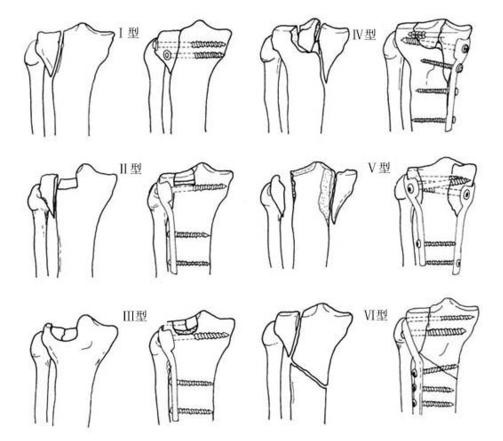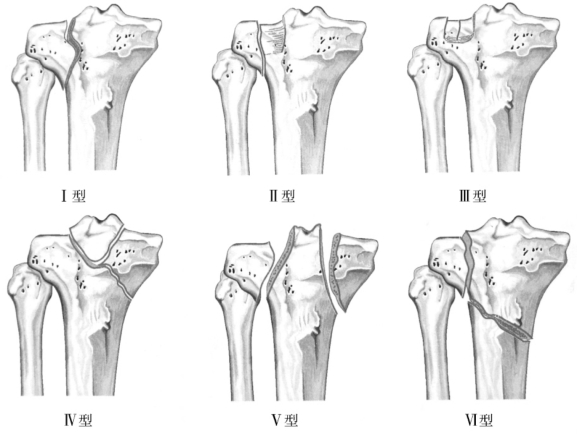

Description
The Schatzker classification, proposed by Schatzker in 1979, is characterized by its simplicity and practicality. It classifies tibial plateau fractures into six types, each with corresponding surgical approaches and fixation methods. Types I, II, and III are typical of low-energy injuries, while the more complex types IV, V, and VI are caused by high-energy injuries.
① Type I: Wedge-shaped split fracture involving the lateral plateau. This typical wedge-shaped non-comminuted fracture fragment displaces outward and downward, commonly seen in young patients without osteoporosis;
② Type II: Wedge-shaped split fracture of the lateral plateau combined with a compression fracture of the weight-bearing area. The lateral wedge fragment splits and compresses downwards into the metaphysis, most common in elderly patients;
③ Type III: Compression fracture of the lateral plateau. The joint surface is compressed into the plateau, with intact lateral cortex, commonly occurring in osteoporotic individuals;
④ Type IV: Fracture involving the medial plateau. This type can be a simple wedge split or a comminuted and compression fracture, often involving the tibial spine;
⑤ Type V: Bilateral plateau fractures. Fractures split both tibial plateaus, characterized by continuity between the metaphysis and diaphysis;
⑥ Type VI: Platform fracture accompanied by separation of the metaphysis and diaphysis. In addition to unicondylar, bicondylar, and joint surface fractures, there are also transverse or oblique fractures of the proximal tibia.
 Home
Home Back
Back